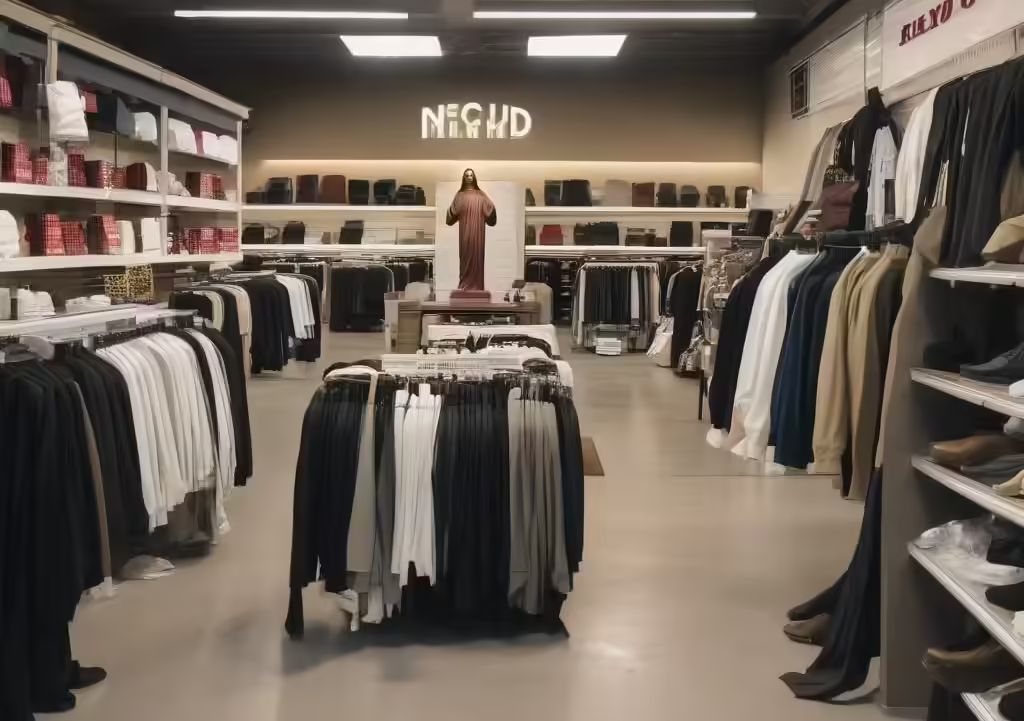A couple of days ago, I made the mistake of logging into Facebook.com instead of my preferred activity of decaying in bed for days at a time, and I saw something that normally only appears around Easter or Christmas. It was a photograph of two men, proudly posing in front of what I can only describe as flagrant blasphemy of the highest magnitude; it was a scene of the crucifixion after Jesus Christ had already been taken down, leaving only a white shawl behind. Although in this particular instance, the cloth was purple, a color normally reserved for royalty because of how costly the color was to produce. The thought process behind the color choice is obvious, but an insidious irony can be found underneath, only modest scrutiny is needed.
Now, what’s wrong with posing in front of a recreation of the crucifixion scene? Nothing at all, if that was all there was to the photograph, but no. The two men who, presumably built this scene, had the three crosses entirely made out of cases of Dr. Pepper.


And snakes there were indeed. So ironically, I went back to Facebook to post my thoughts about this seemingly innocuous image, something that we, especially those of us in Texas, see fairly frequently, and my friends were confused. “But why are you getting so mad about this?” One friend commented, “is it like iconoclasm or what?”
Now, obviously, these people aren’t the type to go into reeling thought spirals that last until four in the morning, and they’re not the type to spend nine days reading the diary of a homeless drug addict as he details his life and loosening grip on reality (I’ll write about Scott T Kemery another day), but I am that type of person. But before I am able to share my thoughts, I first have to give a bit of context of religious items in the medieval era, then even more context into commodities and the market, then I can actually make my point.
We in the modern era take it for granted that we can buy pretty much anything, but medieval people were actually a lot more clever than we give them credit for. In European countries where Christianity was the primary religion, the church explicitly banned the use of sale of holy items in a market, you couldn’t buy candles, you couldn’t buy crucifixes, or icons or anything like that at all. The only way that you could get a religious item was if you made it yourself or if you got them from the church. And some may try to smugly assert their superiority over those in the past and say that this was a way for the church to keep a monopoly over society, but they were a lot more clever than we give them credit for, especially since they understood what happens when a thing enters into a market to become something entirely different.
What the market does when something is sold as a commodity it is plane of universal equivalence, flipped inside out into a smooth imminence. When things enter into the market and become commodities, money acts as a universal equivalent. Before money was introduced in, for example, a barter system, you could only trade things that were similar to each other and things that were whole, you couldn’t divvy them up. As another example, if I have one goat, and I wanted some chickens, I can’t just cut off the goat’s ear and trade that for one chicken; I had to trade the whole goat. Value was subjective and you couldn’t pinpoint exactly how much something was worth, and the value of something you wanted to trade also depended on who you’re trading with and the relationship you have with them.
But when money is introduced in a market, now you can put precise value on a transaction. Under a barter system, you don’t know how many chickens one goat is worth, but with money in a market you can. So you sell your goat for $50, and then use the $50 to buy 50 chickens. Thus, a formula we can use to illustrate this transaction, where G is goats and C is chicken would look like this:
1G=$50=50C
So in a roundabout way, what the market is telling us is that one goat is equal to 50 chickens or:
1G=50C
Now you can start trading all sorts of weird shit, how much is your time worth? How much is your pieces of your body worth? How much is your life worth?
So to finally get to the point: The Cross, the highest holy symbol in the religion where God himself was killed by an evil empire of Romans who invented new technologies just kill and torture the poor people they colonized, the highest holy symbol is put into the market and constructed out of commodities.
So that case of Dr. Pepper is what, $6? What the market is telling us is that highest holiest symbol, the cross, is somehow equivalent to $6 of carbonated beverage.
That is obscene. That is obscene.




